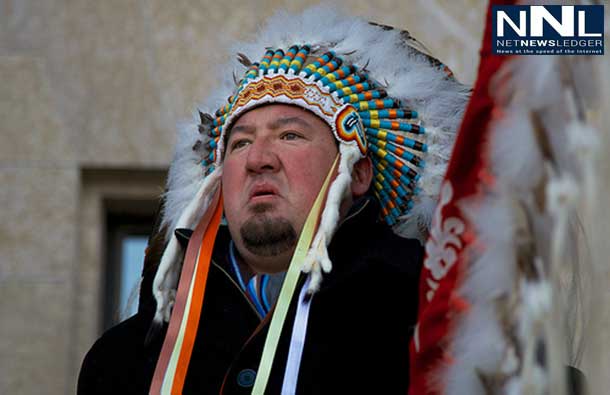
Treaty with the Crown, Not the Federal Gov’t
WINNIPEG – OP-ED – The Crown is indivisible. That is, we cannot expect to hold the feds to a different standard than we do the prov’s and vice versa when it comes to their dealings with treaty peoples within their respective jurisdictions. I commend the Grassy Narrows people on a great effort and an outcome that establishes a new standard in the province’s dealings with indigenous peoples under treaty relationships. By putting the province to the same standard as the federal government, the province can no longer pass off responsibilities and debts to treaty people as a ‘federal responsibility’.
By playing jurisdictional hot potato with First Nations people and our lands in the past, the conversation was stuck in the notion that the feds had responsibility over us under s.91(24), finding its expression in the Indian Act. This can no longer be the standard response of provinces. We are moving to a s.35 recognition, which allows us to begin to ponder who we are outside of the Indian Act, and that my friends, is a major victory for all of us. The question thus arises, who is the ‘Indian’ in s.35 of Canada’s Constitution?
It certainly is not the legally defined ‘Indian’ in the Indian Act….
We made treaty with the Crown, not with the federal government and we should no longer pretend that the feds act as fiduciary on our behalf. That is why it is critical that the Governor General be present in discussions of treaty.
Manitoba not under any illusions
We here in Manitoba have not been under any illusion of federal protection of treaty in light of a seeming indifference towards provincial activities on treaty lands for quite some time now. This reality is most notably marked by the absence of a federal presence in the Treaty 2 communities following the provincial decision to flood treaty reserve lands in 2011 and now in 2014.
Its critically important to consider our jurisdiction in our lands as much more than mere proprietary rights to exploit timber or other natural elements that can be commodified. Our depth of jurisdiction is far beyond the ideas of permits, regulations and free entry passes into the ancestral lands of our families. Our jurisdictions remain intact, regardless of what the Supreme Court of Canada says. Reason being is because our attachment to our lands is ‘inalienable’, which means we’re not going anywhere. To pass a proprietary interest in lands through a provincial regulation or statute is not an expression of jurisdiction, it is an expression of shallow exploitation.
There is no relationship to it, there is no substance to it. Our jurisdiction is built from a deep commitment to the land, expressed by thousands of years of generations of our families stepping foot on the lands we know so well. We have grown deep spiritual roots to the lands that we know so well and we should not discount the importance of that connection in these confusing times.
Once again, communities of Treaty 3 (Grassy Narrows & others), I look to your effort with the same admiration as the efforts shown by our relations in BC in the Tsilqhot’in case. The Canadian legal system is a dynamic and ever evolving enigma…Sometimes what appears to be a loss on the surface, entrenches future victories, while what might appear to be a win on the surface, entrenches long terms losses. Lets not discount what might turn into a positive outcome down the road.
Maybe not in our lifetimes, but maybe in the lives of our children or grandchildren…Grand Chief Derek Nepinak
Assembly of Manitoba Chiefs











